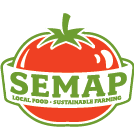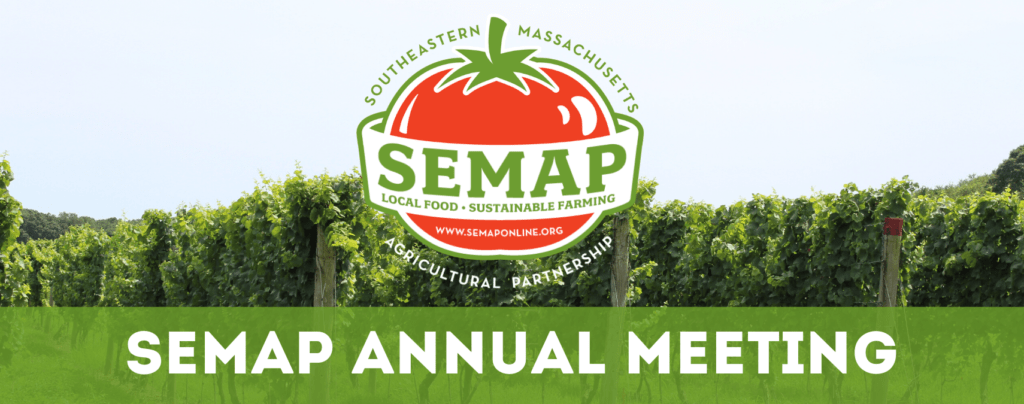SEMAP hosted our first-ever virtual Annual Meeting on November 19, 2020. We were so excited to connect with our supporters and friends after a long year, and update them on the local food system in Southeastern Massachusetts over the past twelve months. Here’s a recap of the topics we covered during the meeting.
We started off with an overview of SEMAP’s latest community and agriculture programs. One of these programs, our Welcoming Markets project under the USDA’s Farmers Market Promotion Program, aims to bring more customers to farmer’s markets through education and promotion of three existing nutrition incentive programs: the Healthy Incentives Program, WIC farmers market coupons, and senior farmers market coupons.
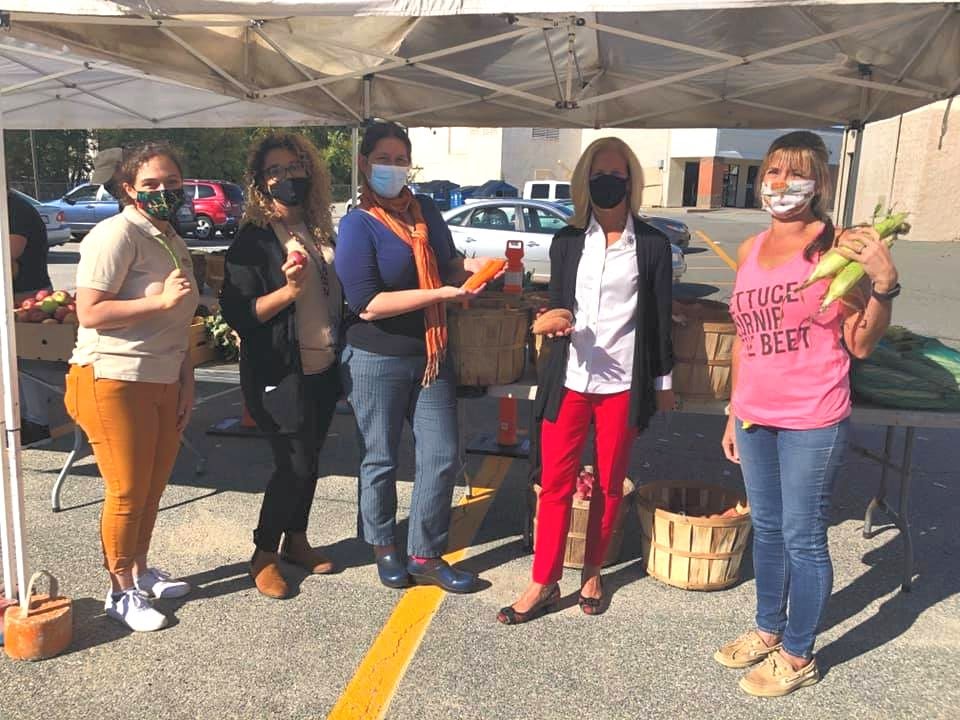
This year, SEMAP launched two new incentive-accepting farmers markets in areas of indicated need in Fall River, and worked with community organizations such as Mass in Motion Fall River, United Way of Greater Fall River, and Self Help, Inc. to educate clients and professionals about these markets and programs. From flyers to Facebook, we spread the word about HIP and farmers market coupons to those who may not have heard of them before. Going forward, we’re planning for an even more vibrant farmers market season next year under this project.
We also covered our recent work on our Beginning Farmer program. Through this program, we support beginning/first-generation farmers with technical assistance and education to succeed in growing their businesses. From 2016-2019, we held over 15 workshops, 2 networking events, and 24 1-to-1 consultations for new farmers on topics from business and bookkeeping to running a CSA. From 2020-2023, we will expand this program to over 400 new farmers, holding more workshops, events, and consultations. Additionally, we will launch a series of 5-hour, personalized, in-depth expert support sessions.
For updates on our Beginning Farmer initiatives and programs, please visit our Beginning Farmers page, fill out our survey, and follow us on Facebook, Instagram, and Twitter.
Next, our Director Karen Schwalbe gave some more updates on SEMAP’s operations and leadership over the past year. She remarked that at the beginning of the COVID-19 pandemic, we—like many other organizations—entered a COVID response phase, and worked with farmers to promote their new shopping options, provide technical assistance with digital ordering platforms, and perform community outreach. Our COVID-19 Resources page launched to keep track of these changes in real-time, and is in our web site’s top three most-visited pages since April.

Along with direct COVID response, we ramped up our digital education efforts, holding webinars for farmers and homesteaders on topics from livestock to backyard chicken-keeping. In the coming months, we plan to expand our online initiatives with more video content showcasing farms and agriculture across our region.
Next to present was Holly Fowler, CEO of Northbound Ventures. This year, Fowler has been working with SEMAP, Coastal Foodshed, and the Marion Institute to explore the food system and possibility of a Food Hub in the southeastern Massachusetts region (Norfolk, Bristol, and Plymouth counties). Building upon the last regional food system assessment conducted in 2014, the team gathered insights about food access, preferences, and behaviors in the area.
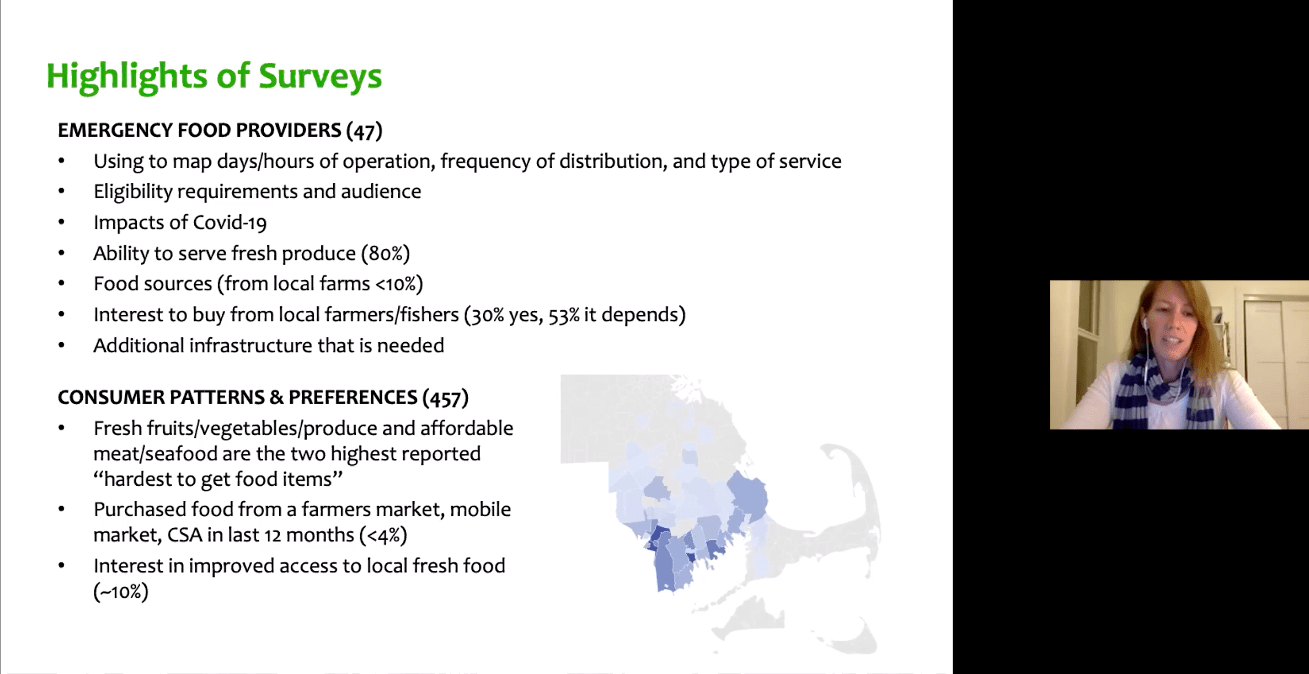
Fowler reviewed the team’s three surveys targeted to emergency food providers, consumers, and farmers, respectively. The team found that only about 10 percent of emergency food providers source produce and other products from local farms, but this group’s overall interest in doing so is 20-40 percent higher. Cost and lack of infrastructure are two factors hindering providers from sourcing local food.
Results from the consumer-focused survey highlighted the cost of fresh produce and meats/seafood, and transportation to get food, making fresh food less accessible to many. Less than 4 percent of respondents said they got food from a farmers market, mobile market, or CSA in the last 12 months, even with the expansion of these services over recent years, signaling much more room for growth and connection with communities who need more local food.
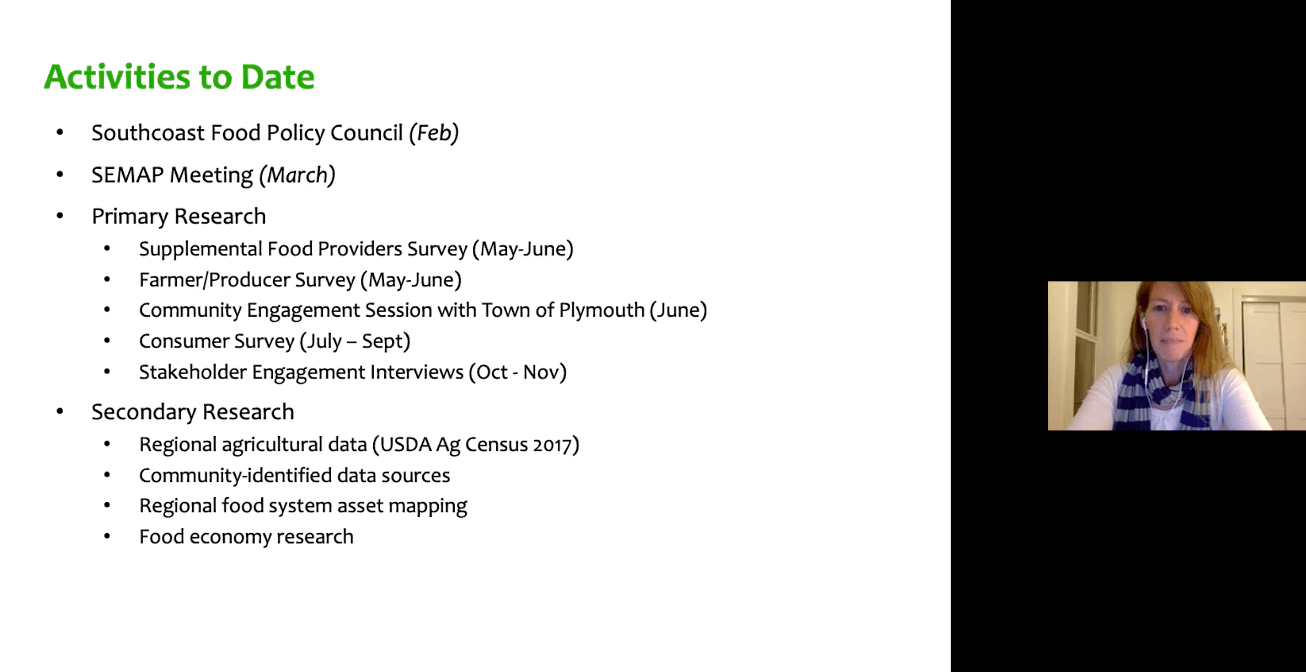
The farmer/food producer-targeted survey found that a majority of farms in the region (62 percent) have been in operation for less than 10 years, and that 450 acres of currently unused farmland in the region could be utilized to supply a potential food hub and help existing farmers expand their operations. The results also indicate that a majority of farmers/producers are interested in being part of a Food Hub, with New Bedford the top choice for potential location.
The study team will continue gathering insights from their research so far, with formalized reporting, conclusions, and recommendations currently underway.
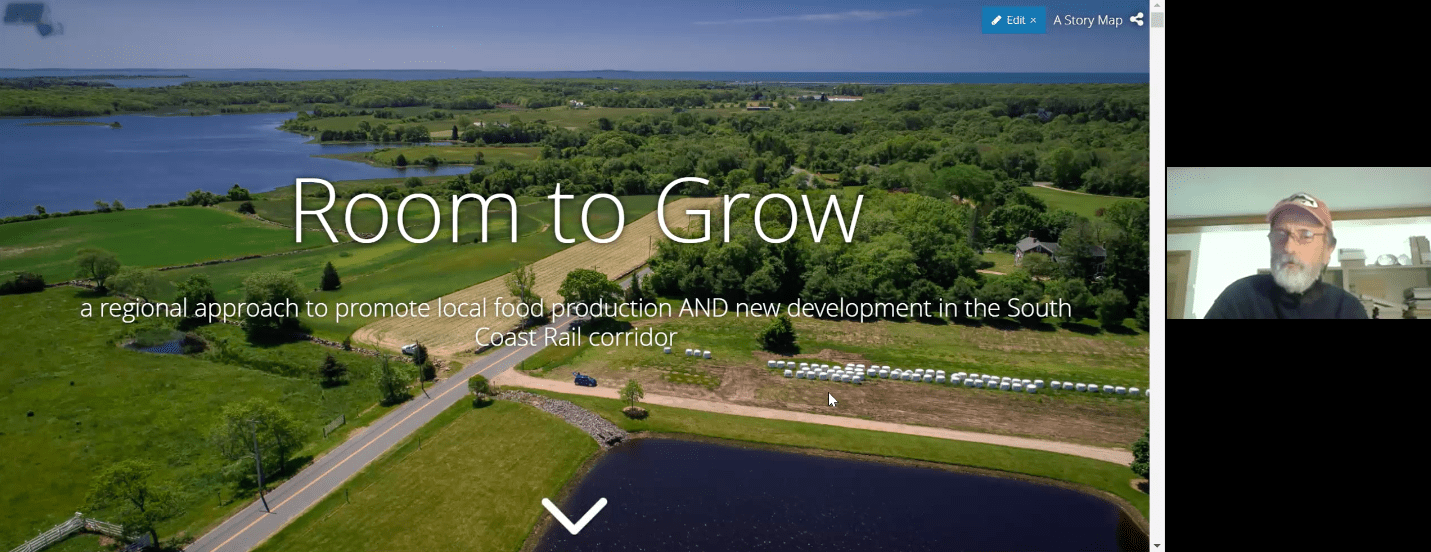
Lastly, the Southeastern Regional Economic and Development District (SRPEDD)’s Helen Zincavage and Bill Napolitano summarized the vision and plan for the upcoming Southcoast Rail project, which will establish a commuter rail line from Boston to Fall River/New Bedford. The team presented a story map visualizing how the project will prioritize and protect farmland/agricultural soils during and after construction.
“You don’t realize how much you could potentially lose to the impacts of [land] development until you take a really close look at it,” said Napolitano. He noted that once viable soil is developed for non-agricultural purposes, it’s very difficult to restore that soil to adequate quality for farming. “You don’t want to lose the ability to feed yourself and keep farmers working,” he said.
To achieve that close land examination and minimize agricultural losses while planning for this new community asset, SRPEDD identified and mapped priority areas of agricultural value near the proposed rail line and projected development around it, e.g. retail, residential, parking, and other gathering areas.

Zincavage pointed out that the region has about 99,932 acres of active agricultural land, some of which has already been designated and preserved for that purpose. That farmland was then mapped alongside those projected development areas, projected areas of preserved land, and populations that live within a 10, 15, and 20-minute drive to a rail station, showing how each layer overlaps with the others.
These comparisons and overlays can help communities plan smart, sustainable development near the new rail line. This can include identifying and agreeing to protect certain farmland parcels on the fringes of projected residential/business development areas, agriculturally-important soils that are not currently being used for farming, and identifying urban agriculture opportunities.
Now, SRPEDD is sharing their findings with the community, and customizing preservation plans and approaches to each town’s needs.
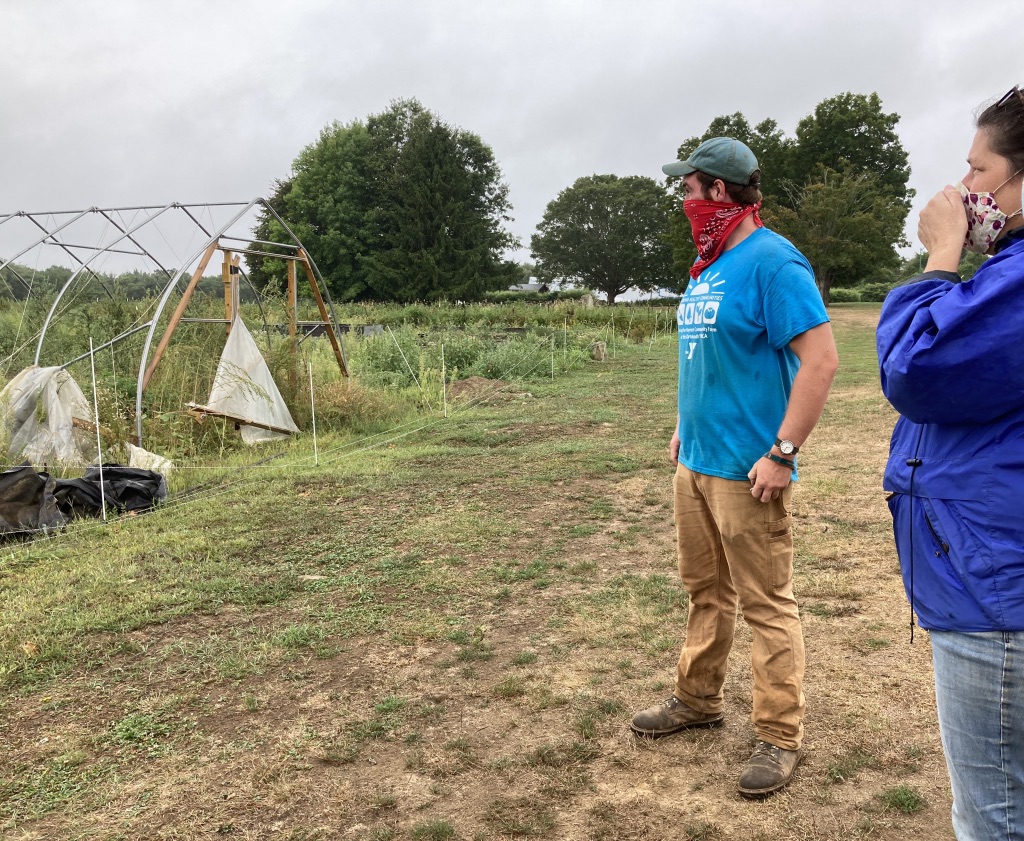
We’re incredibly proud and excited to work with these partners on so many projects that aim to keep farmers farming and bring local food to all. Follow us on social media and subscribe to our newsletter to keep an eye out for updates and exciting news on all of these initiatives. We hope to connect with you again soon!
